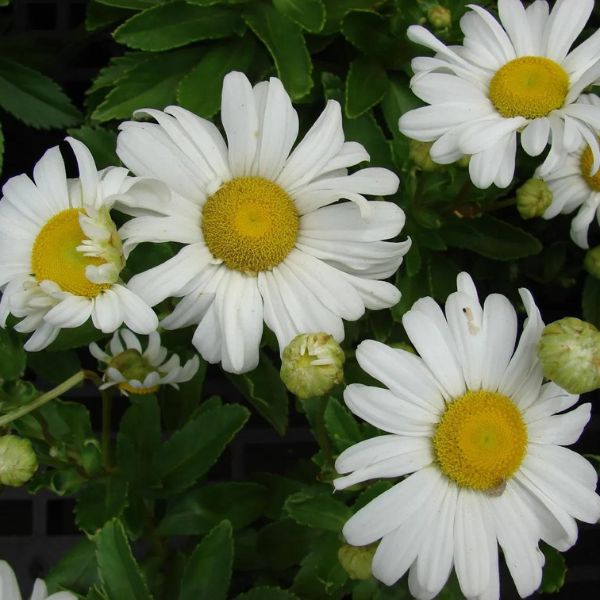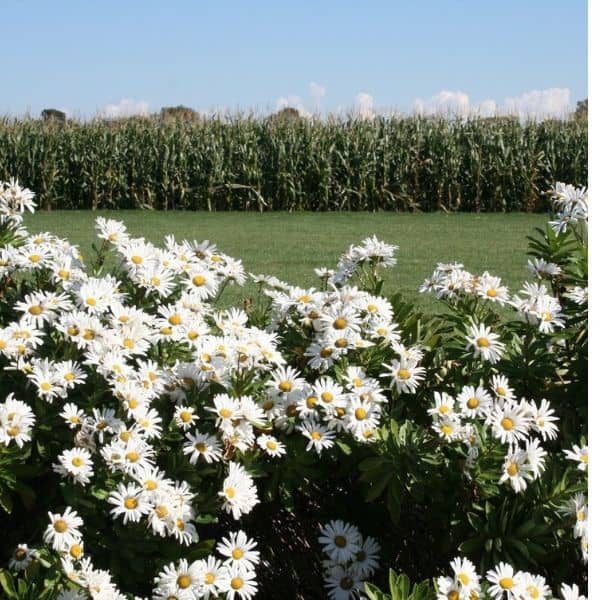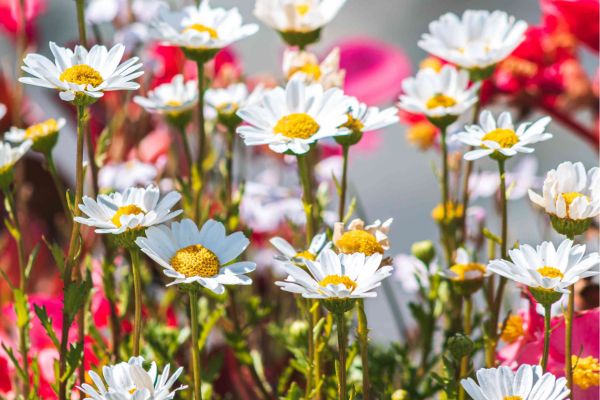Montauk Daisy, also known as Nippon Daisy, is a great choice if you would like to have flowers in your garden late in the fall. These are native to coastal regions of Japan and have been neutralized in the United States New Jersey, and New York.
Montauk Daisy is known for its durability and beautiful look of white flowers with yellow centers and is a maintenance plant making them perfect for rock gardens, borders, and as standalone features in garden beds. Understanding the specific needs of Nippon Daisy is important for their proper growth and care.
If you are searching for a perennial to enhance the look of your garden in the late season, then this article will provide you with all the information to grow your Montauk Daisy well every year.
Montauk Daisy/Nippon Daisy
Montauk Daisy/Nippon Daisy, scientifically known as Nipponanthemum nipponicum, is a bushy perennial that usually grows to a height of two to three feet. This plant has a lot of white, daisy-like flowers with yellow centers, while its leaves have a dark green, leathery nature. Though Montauk originated from the coastal part of Japan, this resilient plant has been mostly popular in North America, mainly in the Northeastern region.
These plants can grow in sandy soil, however, as long as there is enough drainage, they can adapt to a variety of soil types.
How to plant Montauk Daisy?

Location and Climate
This plant can tolerate harsh weather conditions and is resistant in USDA zones 5-9. When planting this plant, you need to select a bright area for your Montauk Daisy, while it can also tolerate some shade. Montauk Daisy prefers full sun, on the other hand, some afternoon shade is better in hotter regions.
Soil
When planting it is important to prepare the correct soil for your plant. Montauk Daisy may grow in any soil type, but they thrive and do well in sandy, well-drained soil. A slightly acidic soil (pH 5.5 to 6.5), dry soil is best for the proper growth of the Montauk Daisy.
On the other hand, to increase soil fertility and drainage, mix the soil with compost or well-rotted waste.
Process of Planting
- Make a hole that is around the same depth and twice as wide as the roots of the plant.
- After you have placed the plant in the hole, make sure the soil around the roots is level at the top.
- Fill it with the soil, and gently press down.
- In order to help the soil settle around the roots, water the area well after planting, but make sure the soil is not waterlogged during its growing season.
Best time to plant Montauk Daisy?
Spring and Early fall are the best times to plant Montauk Dasiy or Nippon Daisy, for root development which results in stronger plants and more beautiful blooms.
If you plant your Montauk Daisy in Spring, then it can develop a strong root system during its growing season and will grow well and flourish in the summer. On the other hand, early fall/autumn lets the Montauk grow the roots before the arrival of winter, also it is beneficial in areas with milder winters because the plants will be ready for rapid growth during springtime.
When does Montauk Daisy flower?

Montauk Daisy/ Nippon Daisy normally blooms from late summer through fall, starting in August through October. The petals of this plant are pure white and in the middle of the flower is a yellow disk with small tubular florets.
Essential Care Tips
Watering Needs
Proper watering is essential for the proper health and growth of Montauk Daisy plants, as these plants are drought-tolerant they do not like inconsistent moisture. Watering your Montauk too much can lead to root rot and cause other problems too. Check the moisture of the soil i.e. let the top soil dry, before watering.
Furthermore, you will need to change the timing of your watering depending on the weather conditions. You will need to water more regularly in hot, dry weather, and water less in winter or rainy weather.
Sunlight Requirements
Montauk prefers full sun to grow and flourish, they need at least 6 to 8 hours of sunlight per day. While this plant can tolerate some partial shade, continuous shade can cause leggy growth and fewer flowers.
Morning sunshine is beneficial as it helps to dry out the foilage and reduce the chance of fungal disease.
Fertilization
For the healthy growth of your plant, proper fertilization is required. However, Montauk does not really need fertilization but applies a bit amount of fertilization in midsummer. Also, avoid overfertilization as it can lead to yellow or drooping of leaves. Moreover, you can use a balanced fertilizer of 10-10-10 in the early spring if your soil is very weak.
Pruning
Another important aspect of keeping your plant healthy and in shape is Pruning. You will need to trim back the plant by one-third in the early spring for healthier and bushier growth. Throughout the flowering season, remove the damaged leaves or flowers for constant blooming. The late fall/autumn after the first frost you can trim the plant back to just above ground level.
Managing Pests and Diseases
Though Montauk Daisy is a resistant plant, pests, and diseases can still affect them like the other garden plants.
Pests: The small, tiny insects like Aphids, Spider Mites, Slug, and Snails can form clusters on newly growing leaves, and yellowing of leaves.
Solution: To get rid of pests, you can use a powerful flow of water to spray affected plants in order to remove aphids. Also, as an alternative, you can use neem oil or insecticidal soap.
Disease:
Powdery Mildew: A fungal disease that affects the leaves in a humid environment and appears as a white powdery coating.
Solution: Make Proper spacing between plants for better air circulation. Remove the dead or damaged leaves, or use a fungicidal spray.
Root Rot: Overmoisture or poorly drained soil can cause root rot, which will lead the plant to wilt, become yellow, or die.
Solution: Use organic matter to improve soil drainage, make sure not to leave your plant in wet soil, and avoid overwatering.
FAQ
1. When to trim Montauk daisy?
Late Spring or Early Summer is usually best for trimming Montauk Daisy, as this allows the plants to grow strongly, and healthy as they get ready for the next blooming season.
2. Why are they called Montauk daisies?
The beautiful peninsula of Montauk, New York, at the easternmost point of Long Island, is the reason behind the name Montau Daisies.
3. Is Montauk Daisy the same as Shasta Daisy?
No, despite belonging to the same family (Asteraceae) and having the same visual similarity, the Montauk Daisy and Shasta Daisy are not the same plant.
Also, read more about, How to grow Ranunculus? Everything You Need To Know
